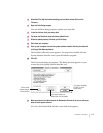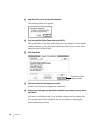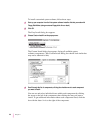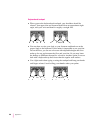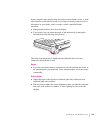
Musculoskeletal discomfort
As with any activity that involves sitting for long periods of time, using a
computer can make your muscles sore and stiff. To minimize these effects, set
up your work environment carefully, using the guidelines that follow, and take
frequent breaks to rest tired muscles. To make working with your computer
more comfortable, allow enough space in your work area so that you can
change position frequently and maintain a relaxed posture.
Another type of musculoskeletal concern is repetitive stress injuries (RSIs),
also known as cumulative trauma disorders (CTDs). These problems can
occur when a certain muscle or tendon is repeatedly overused and forced into
an unnatural position. The exact causes of RSIs are not totally understood, but
in addition to awkward posture, such factors as the amount of repetition, the
force used in the activity, the individual’s physiology, workplace stress level,
and lifestyle may affect the likelihood of experiencing an RSI.
RSIs did not suddenly arise when computers were invented; tennis elbow and
writer’s cramp, for example, are two RSIs that have been with us for a long
time. Although less common than other RSIs, one serious RSI discussed more
often today is a wrist problem called carpal tunnel syndrome, which may be
aggravated by improper use of computer keyboards. This nerve disorder
results from excessive pressure on the median nerve as it passes through the
wrist to the hand.
This section offers advice on setting up your work area to enhance your
comfort while you use your computer. Since the effects of repetitive
movements associated with using a computer can be compounded by those
of other work and leisure activities to produce or aggravate physical problems,
proper use of your computer system must be considered as just one element
of a healthy lifestyle.
No one, of course, can guarantee that you won’t have problems even when you
follow the most expert advice on using computer equipment. You should
always check with a qualified health specialist if muscle, joint, or eye
problems occur.
126
Appendix A



